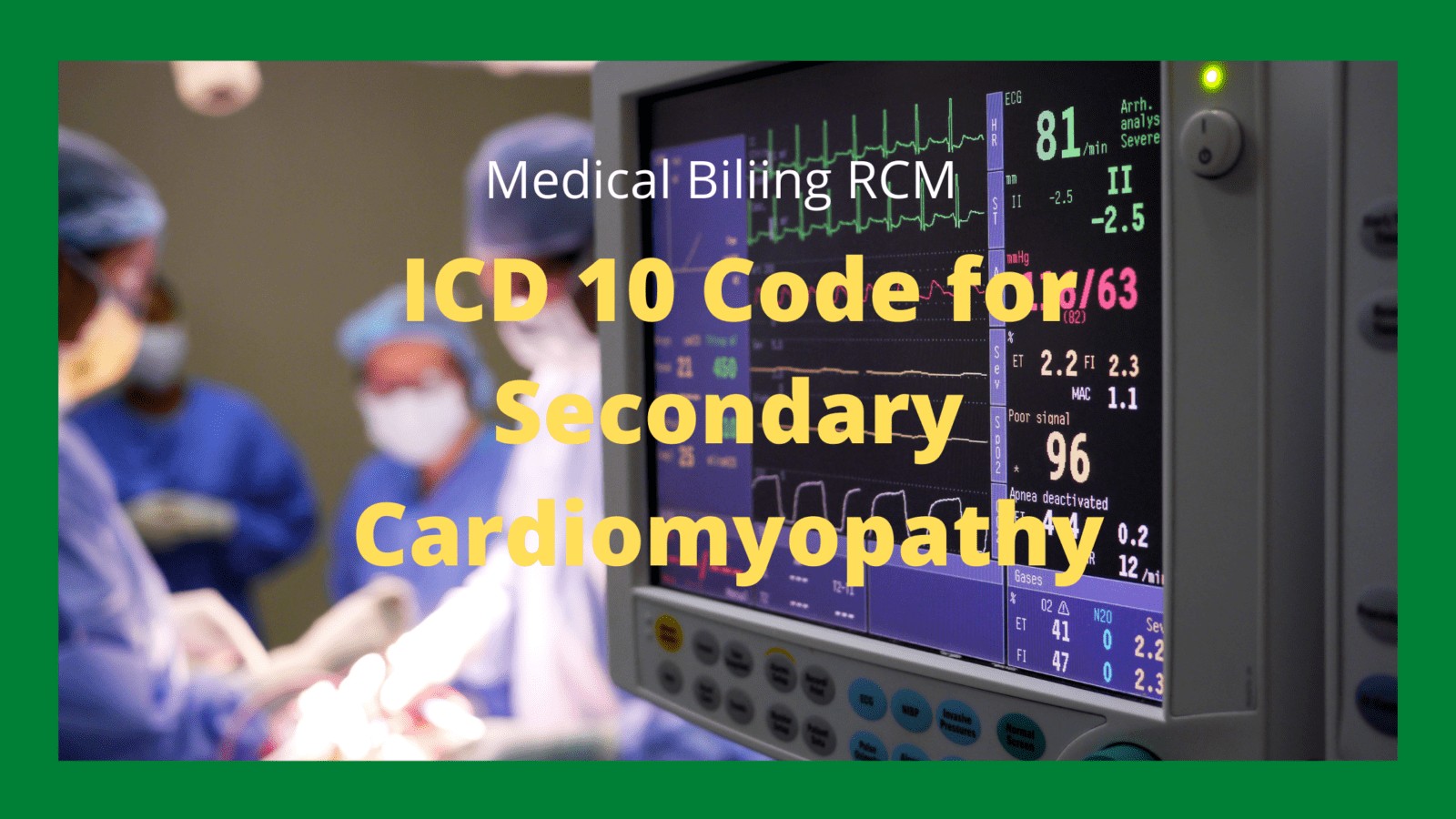One of the most vital organs of most human beings is the heart and understanding the mechanism of the same can be tough at certain times. ICD 10 code for secondary cardiomyopathy is used for improve heart’s ability and pump blood.
However, it often happens that there are certain implications of the heart muscle which could be resulting in a change of your body and thus it is important to be a little aware of the same.
In the most simple terms, Cardiomyopathy is a condition that is known to affect and target the heart which could be detrimental in the long run.
The most problematic factor about cardiomyopathy is that it tends to get worse over time. Because it is so common, we have also tried to talk about the ICD 10 code for secondary cardiomyopathy so that it becomes easier for you to use the same during times of need.
What are The 4 Types of Cardiomyopathy?
Before we talk in detail about the ICD 10 code for secondary Cardiomyopathy, it is essential to have a brief idea about what the 4 variants are and how they can affect you.
- Dilated Cardiomyopathy
This type of Cardiomyopathy is probably the most common one and it tends to affect a huge chunk of the population. The most common phenomenon that happens here is that the blood-pumping chamber of the heart enlarges and it becomes detrimental as well.
It is because of the dilation of the heart muscle that it gets the name from. It tends to affect the heart’s major pumping chamber and only gets worse with time.
- Hypertrophic Cardiomyopathy
The most common type of explanation for hypertrophic Cardiomyopathy is that it leads to the thickening of your heart muscles.
This leaves very little space for the blood flow and over time the constriction becomes more problematic. It often leads to the left ventricle which is very stiff and hence the blood flow to and from the heart becomes restricted.
- Restrictive Cardiomyopathy
Restrictive Cardiomyopathy is one form of the disease that does not have a very wide prevalence and it seems to affect only a very few percentages of the population.
In this condition what happens is that the lower chamber walls are very rigid and hence it does not expand flexibly when the need is so. It could get problematic with time as the blood flow will get hindered and it could be detrimental for the longer run.
- Transthyretin Amyloid Cardiomyopathy
Transthyretin amyloid cardiomyopathy is yet another form of cardiomyopathy that affects the heart muscles and it is a direct consequence of a lot of protein buildup in your muscles.
This protein is usually made by the liver and this deposit usually turns out to be quite detrimental in the longer run. The buildup is completely unnatural and it tends to affect the muscles with very little space for blood regulation.
ICD 10 Code for Cardiomyopathy
Now that we have learned about what the 4 types of cardiomyopathy are, it is also important to know about the ICD 10 code for Cardiomyopathy. The code for Cardiomyopathy is 142 which is a billable code and in case you want to use it, the code needs to be mentioned clearly. All the domains of cardiomyopathy fall under this particular code and depending upon your requirements, the one can be mentioned in the billing sector.
- I42.8 is a billable ICD-10-CM code that can be used to indicate a diagnosis code for reimbursement purposes.
- The 2022 edition of ICD-10-CM I42.8 effective on 10/01/2021.
- This is the American ICD-10-CM version of I42.8 and other international versions of ICD-10 I42.8 may be differ.
| I42.0 | Dilated cardiomyopathy (includes congestive cardiomyopathy) |
| I42.1 | Obstructive hypertrophic cardiomyopathy (includes hypertrophic subaortic stenosis) |
| I42.2 | Other hypertrophic cardiomyopathy (includes nonobstructive hypertrophic cardiomyopathy) |
| I42.3 | Endomyocardial (eosinophilic) disease (includes endomyocardial [tropical] fibrosis and Löffler’s endocarditis) |
| I42.4 | Endocardial fibroelastosis (includes congenital cardiomyopathy and elastomyofibrosis) |
| I42.5 | Other restrictive cardiomyopathy (includes constrictive cardiomyopathy not otherwise specified [NOS]) |
| I42.6 | Alcoholic cardiomyopathy (also code presence of alcoholism [F10.-]) |
| I42. | Cardiomyopathy due to drug and external agent (first code [T36 to T65] to identify cause) |
| I42.8 | Other cardiomyopathies; and |
| I42.9 | Cardiomyopathy, unspecified (includes cardiomyopathy [primary] [secondary] NOS). |
Cardiomyopathy is one disease that is affecting a chunk of the population, majorly due to the lifestyle that we lead. Although it does get worse with time, detection at the right time and managing it effectively could deter the process and ensure that you lead a comparatively healthier life.

